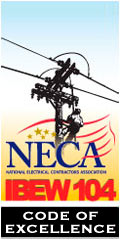
| Past Issues/Subscribe | Employment | neppa.org | Legislative Update | Advertise | November 2010 |

Learning linked to performance
Learning in the workplace is, or should be, linked to job performance. When we access new information or learn a skill, we can incorporate that knowledge into the way we do our jobs. One form of learning that happens frequently (at least, it should happen frequently) is feedback. When our supervisor or colleagues comment on how we are doing, they give us the opportunity to work even better—if the feedback is delivered effectively. Here are some helpful hints about the Do’s and Don’ts of evaluating someone’s work. The Don’ts: Don’t give group-only feedback. Telling an entire group that it is doing well or poorly does not let people know how their individual efforts are aiding or detracting from the group’s overall efforts. Speak briefly with each employee separately. It doesn’t take long, and your subordinates will have a clearer idea of the contribution they are making to the group. Don’t make your feedback vague. Be specific. Saying "Nice job" or "That won’t work" tells the employee nothing. Which part of the performance was effective? Which needs to be done better? Alluding to what was done particularly well will help reinforce the behavior, and indicating where the performance was lacking allows the employee to make any necessary adjustments. The Dos: Be direct with good news, indirect with bad. When your message is positive you can get right to the point, but when making constructive criticism, don’t start off with the negative comment. Use the "plus-minus-plus" approach. Begin with what the person has done well (or at least acknowledge that they have worked hard on the task), then bring up the aspect of the performance that needs to be improved, and end with a word of encouragement. People are more likely to accept criticism if they are also given credit for what they have done well. And finally, explain the consequence of continuing their current behavior. In other words, what will happen as a result of their performance as it stands now? Keep in mind that consequences can be positive as well as negative. If the person is doing something well, tell them what positive things will result from their good work. Also let them know, however, what negative results will follow from their shortcomings. When you explain to people the consequences of their actions, they come to understand what effect they have on the entire organization, and that in itself can be motivating. I hope this article was helpful to you...so, how did I do? |




